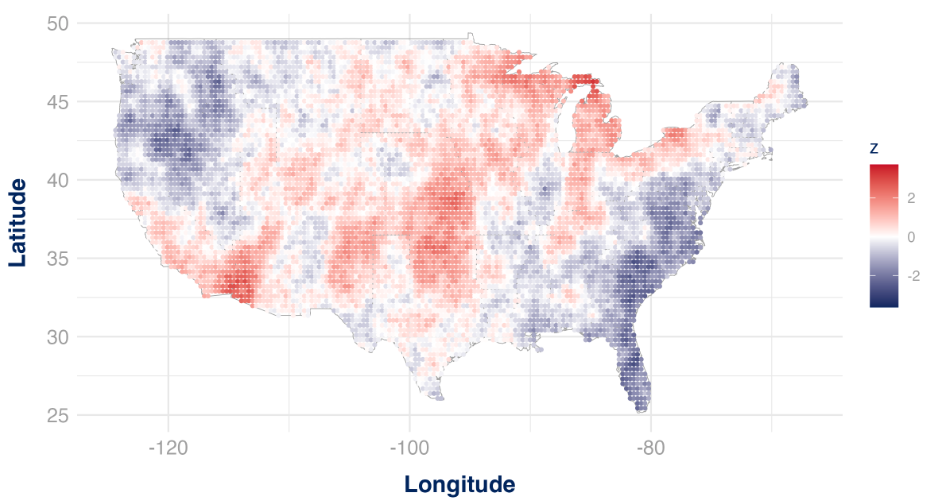Hi! I’m Mary Lai, an Assistant Professor in Statistics at University of Connecticut
(UConn). Prior to joining UConn, I was a Postdoctoral Fellow at the Department of
Mathematics at University of Houston. I received my Ph.D. at the King Abdullah
University of Science and Technology (KAUST), Saudi Arabia.
My research interests include extreme events, risks, disasters, space-time
statistics, high-dimensional and multivariate statistics, high performance
computing, big data, machine learning, deep learning, artificial intelligence,
environmental data science.
My mission is to understand the dynamics of the climate system using statistics and
to communicate its laws through statistical models. My research has provided me the
opportunity to analyze climate processes, to build models that describe how the
components in the climate system interact, and to develop the high-performance
computing skills to run big data experiments required for climate research. Through
the years, my appreciation to how much story climate data can tell us about our
planet has grown.
My research revolves around physics-motivated statistical modeling of the Earth to
contribute to the scientific communities’ efforts to understand and tackle climate
change. We are still facing significant gaps in understanding and predicting Earth’s
climate and weather. Climate change is now outpacing climate models. Nowadays, the
weather that we have prepared for is not the weather that we are getting. The
systems and infrastructures built for managing disastrous events such as fires,
floods, and droughts, were based on climate models which are rendered outdated by
the new normal of extreme climate events. Climate models failed to predict the
deadly heat wave in the cool and rainy Pacific Northwest region last June 2021, the
megadrought in the Southwest US, the changing ecosystem of the Boreal forest (the
world’s largest carbon sink), the rapid warming in the Arctic ocean, and the
shifting jet stream behavior which caused simultaneously the deadly flooding in
Germany and Belgium, the heatwave in Canada, and the Black Sea flooding in the
summer of 2021. Unless we update these models, we are left vulnerable to these
“unforeseen” climate events.
As an Assistant Professor in Statistics at the UConn, I lead the research on Extreme
Events, Risks, and Disasters that develops state-of-the-art models that help advance
climate science and shape our awareness of future disaster chains. My expertise are
on three key areas which I believe are the most pressing issues of our time: Extreme
Events, Risks, and Disasters Modeling.
By thinking of the Earth as a complex system and by identifying the vulnerabilities
of its components due to extreme events, we can build resilience and minimize losses
of any kind. By combining space-time statistics, extreme statistics, Bayesian
statistics, machine learning techniques, physics models, and other methods for
massive datasets with complex dependence structures, powered by high-performance
computing technologies, we can develop new models that can more faithfully render
topographic, geologic, atmospheric, and biological details over small regions.












